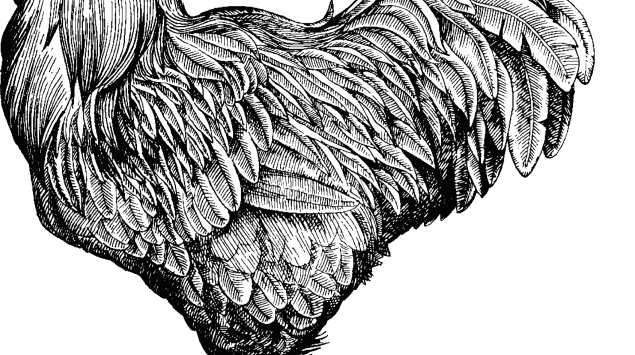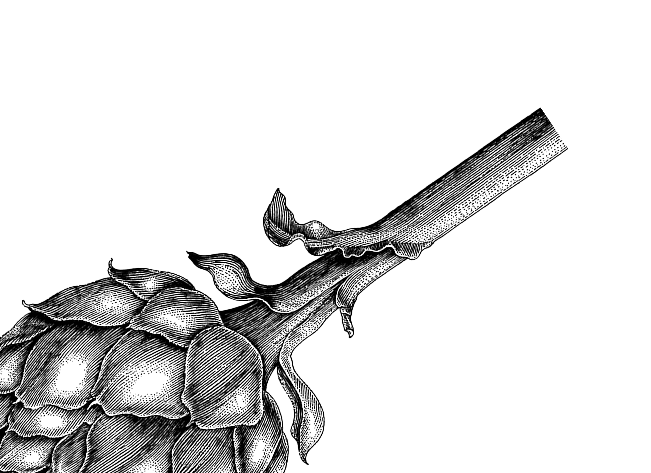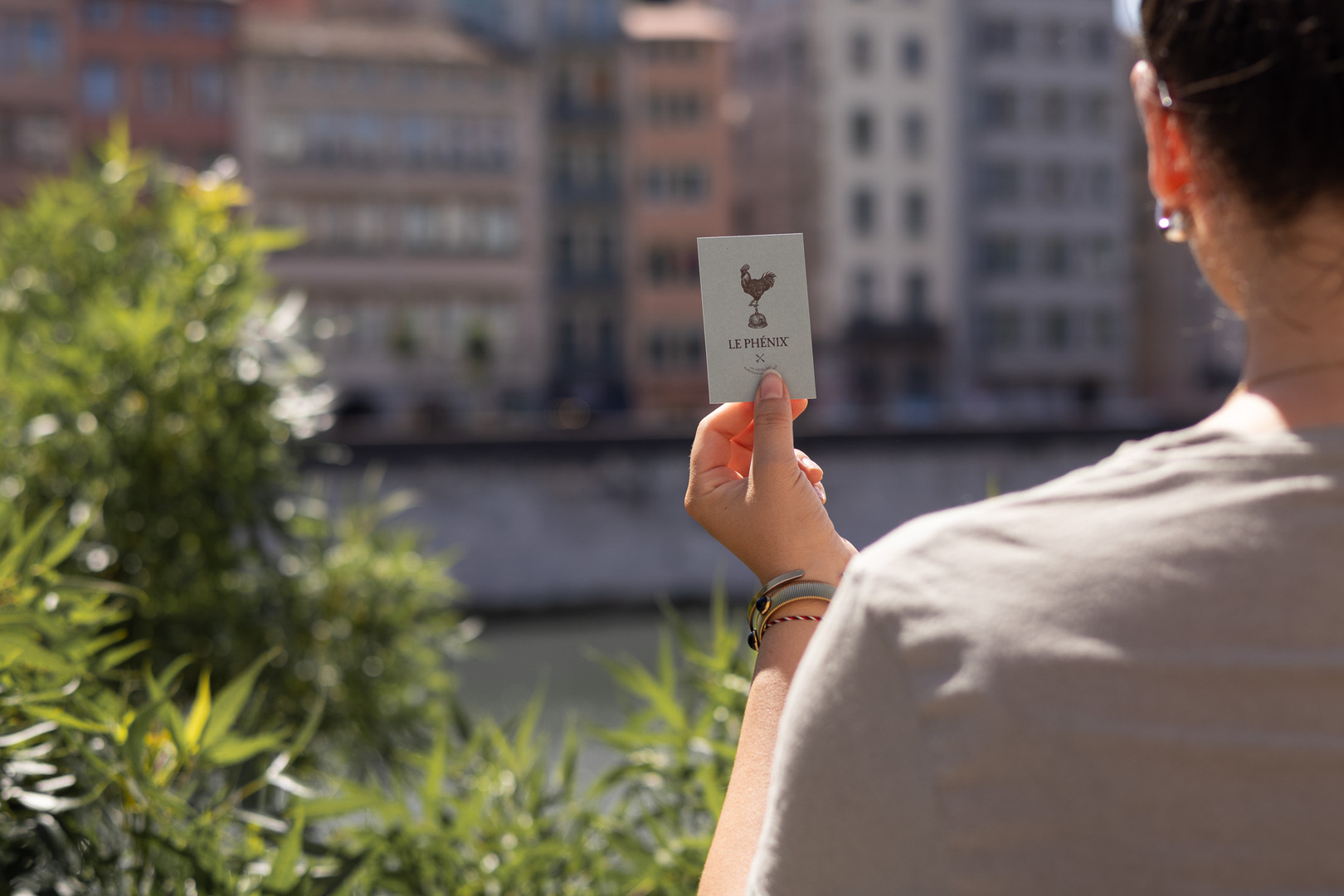
Lyon Saint-Jean: must-see places in the district
Dive into the heart of Lyon Saint Jean
A vibrant historic district where every alleyway tells a fascinating story. Discover the hidden treasures and must-see gems of this pearl of Vieux Lyon, nestled on the banks of the Saône.
The Cathedral Saint-Jean-Baptiste
Incontournable du quartier, la Cathédrale Saint-Jean-Baptiste est un véritable trésor architectural et spirituel de Lyon. Fondée au XIIe siècle, cette magnifique cathédrale mêle harmonieusement les styles roman et gothique, reflétant les évolutions architecturales de l’époque.
Ouvrez vos yeux pour découvrir : La construction de la cathédrale a débuté en 1180 et s’est étalée sur près de trois siècles, (d’où son mélange de styles). Elle a été témoins de grands évènements et a toujours ue un rôle majeur dans la vie religieuse lyonnaise.
Astronomical clock: dating from the 14th century, this fascinating instrument not only tells the time, but also the positions of the stars and the dates of religious festivals. Isn’t it amazing?
Transept and choir: Admire the beauty of the sculptures and capitals, testimony to medieval religious art.
Rosettes: Those big stained-glass windows always thrill us, don’t they?
A little history Over the centuries, the cathedral has survived wars and revolutions, retaining its sacred aura and timeless charm. Today, it continues to welcome worshippers and visitors from all over the world, drawn by its beauty and rich history.
A visit to St. John’s Cathedral plunges you into a glorious past, while appreciating a one-of-a-kind architectural masterpiece. A must-see for all history and heritage lovers.
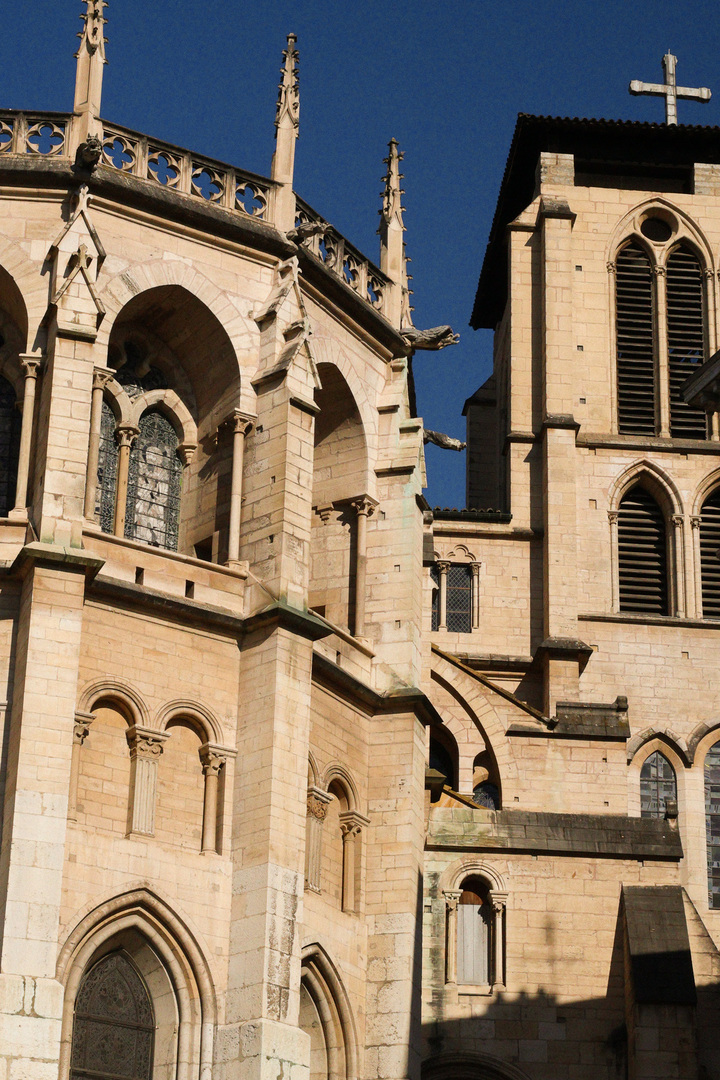
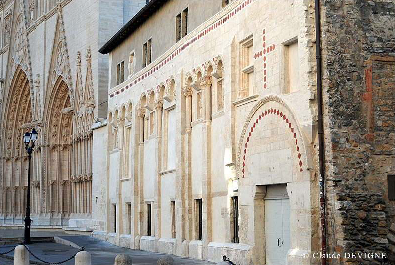
La Manécanterie
Right next to Saint-Jean Cathedral, the Manécanterie is one of Lyon’s oldest buildings, dating back to the 12th century. It was once the home of the cathedral’s choirboys, where they learned to sing.
Over the centuries, the Manécanterie changed function several times, notably after the French Revolution. In the 19th century, it became a museum dedicated to the history and art of the cathedral. When you visit the Manécanterie, you’ll love its simple yet elegant Romanesque style.
Here’s what you don’t want to miss:
The Romanesque façade: With its sculptures, this is a fine example of Romanesque art in Lyon.
Permanent exhibition: Today, the Manécanterie houses a museum where you can see cathedral treasures, medieval sculptures and historical documents.
La chapelle Saint-Jean: Small and peaceful, it invites meditation.
La Manécanterie has changed function several times, notably after the French Revolution. In the 19th century, it became a museum dedicated to the history and art of the cathedral.
Today, the Manécanterie is a place to discover the history of Lyon and its cathedral. Its visit is an excellent complement to that of the cathedral, offering an insight into the religious and cultural life of Vieux Lyon. A must-see for the curious and history buffs!
The House of the chamarier
This former mansion, dating from the 15th century, was the home of the chamarier, the officer in charge of the cathedral’s police and finances. The house has played host to a variety of personalities and witnessed many historic events. Carefully restored, it now offers a fascinating insight into life in Lyon during the Middle Ages.
Don’t miss the inner courtyard, with its magnificent galleries and arcades, murals and French ceilings, spiral staircases and hidden passageways… A true journey back to the Middle Ages.
A visit to the Maison du Chamarier is a plunge into Lyon’s history, and a discovery of a place steeped in mystery and charm. A perfect stopover for heritage enthusiasts and the curious in search of hidden treasures.
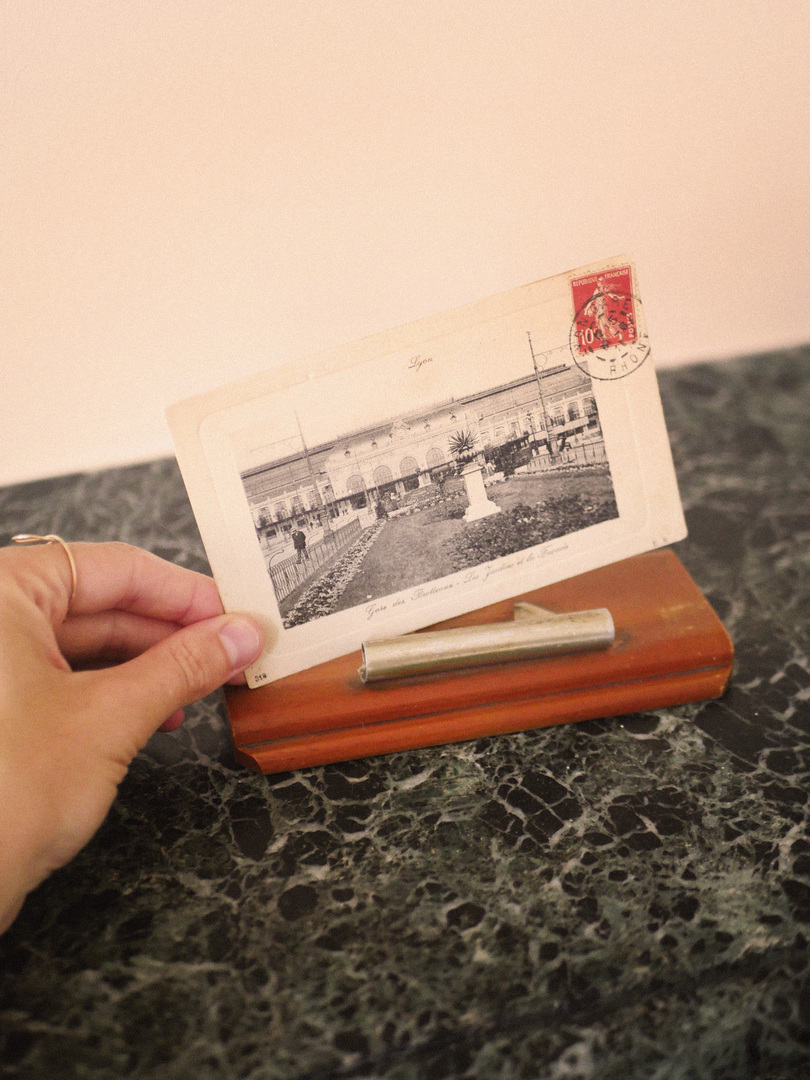
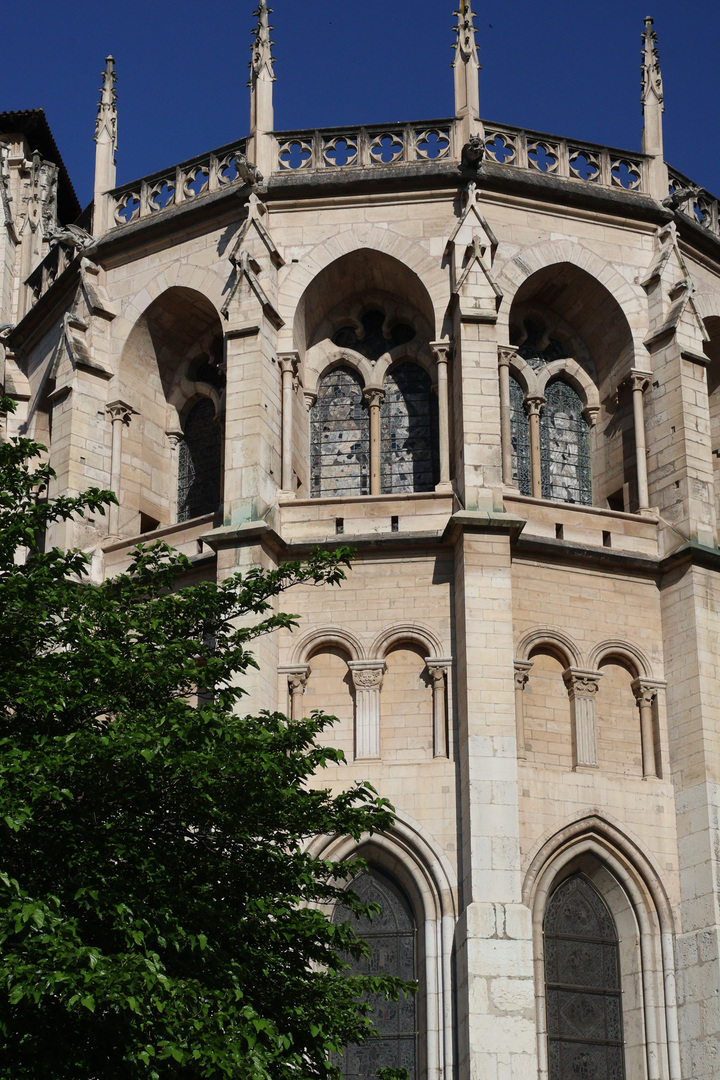
The archaeological archaeological garden
Not far from the cathedral, the Jardin Archéologique was laid out in the 1970s, following excavations that unearthed impressive remains. These ruins reveal the evolution of the St. John’s Cathedral site from Roman times to the Middle Ages.
Archaeological finds include fragments of mosaics, tombs and architectural elements that testify to the region’s rich history.
A stroll through the Jardin Archéologique is like plunging into more than 2000 years of history. This peaceful setting offers a unique perspective on Lyon’s origins and development over the centuries.
The courthouse courthouse
It’s one of Lyon’s most famous monuments. Lyon’s Palais de Justice, also known as the “Palais des 24 Colonnes” because of its majestic facade, is an iconic monument on the banks of the Saône. Built between 1835 and 1845 by architect Louis-Pierre Baltard, this imposing building has been the scene of numerous historical and judicial events.
Inside, the vast staircases and impressive audience rooms are often compared to those of royal palaces. These spaces have been carefully designed to inspire respect and solemnity. 24 columns for 24 hours to imply that justice never waits, never pauses.
In 1987, it hosted one of the most high-profile trials of the 20th century. Klaus Barbie, former head of the Lyon Gestapo and nicknamed the “Butcher of Lyon”, was tried for crimes against humanity.
Urban legend has it that a ghost haunts the corridors of the Palais de Justice. It’s said to be the spirit of a famous lawyer convicted of treason in the 19th century.
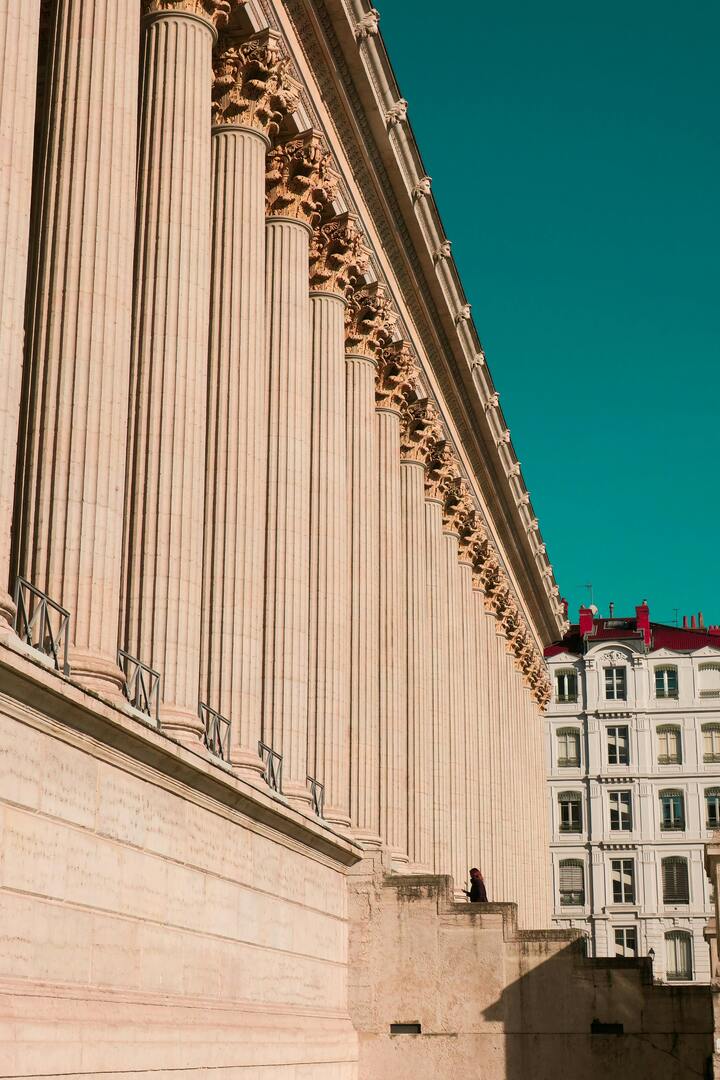
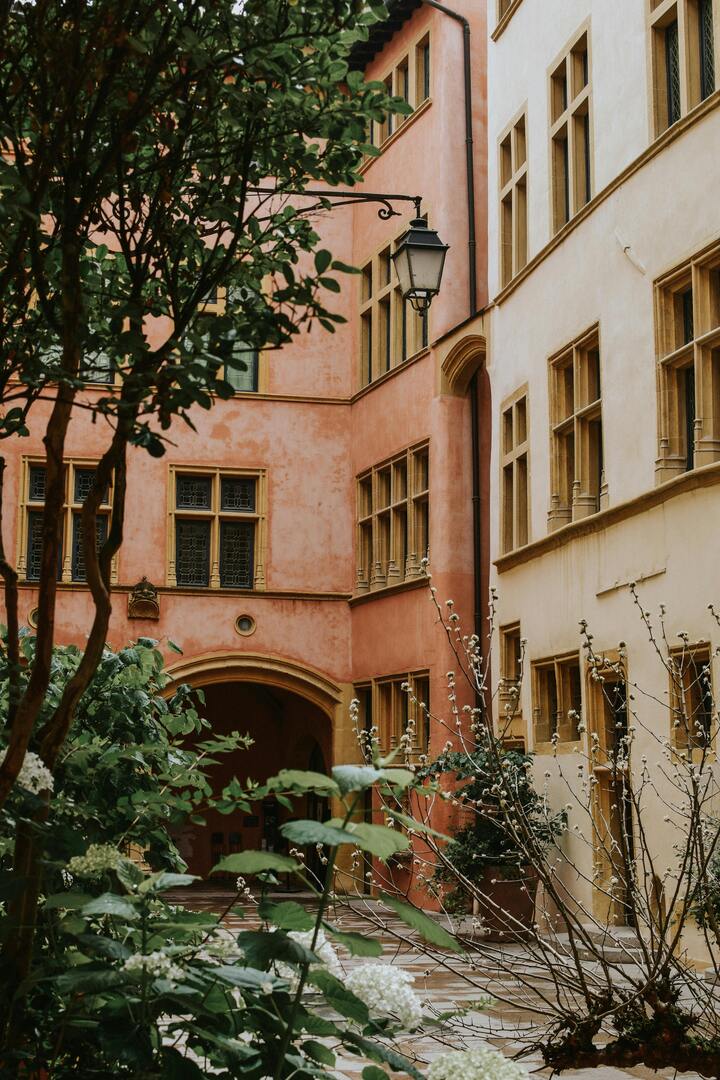
The rose
From mansions to residences, the Pink Tower was a meeting place for Lyon merchants, drawn over the years by the flourishing trade in silk and other precious goods!
In the 20th century, the Tour Rose was restored and transformed into a charming hotel, becoming a landmark for tourism in Lyon. It has also housed restaurants and cultural spaces, contributing to its lively, cosmopolitan atmosphere.
To recognize it, look for a cylindrical, pink shape with distinctive features like mullioned windows, wrought-iron balconies and sculpted ornamentation. It offers a panoramic view of the neighborhood!
Did you know? The Pink Tower has been the setting for several films and TV series, attracted by its unique charm and historic setting.
It’s a must-see when exploring Vieux Lyon.
The Palais Saint-Jean
The Palais Saint-Jean is located on the banks of the Saône. An integral part of the city’s architectural heritage, it is one of the most emblematic buildings in the Saint-Jean district. It is a remarkable example of Renaissance architecture, characterized by its elegant lines, ornate facades and sculptural details.
It too was once the residence of wealthy Lyon merchants and notables, before being transformed into a museum. Here, visitors can discover fascinating collections of objects, paintings and historical artifacts.
The palace also hosts a variety of cultural events throughout the year, including temporary exhibitions, concerts and conferences – how cool is that?

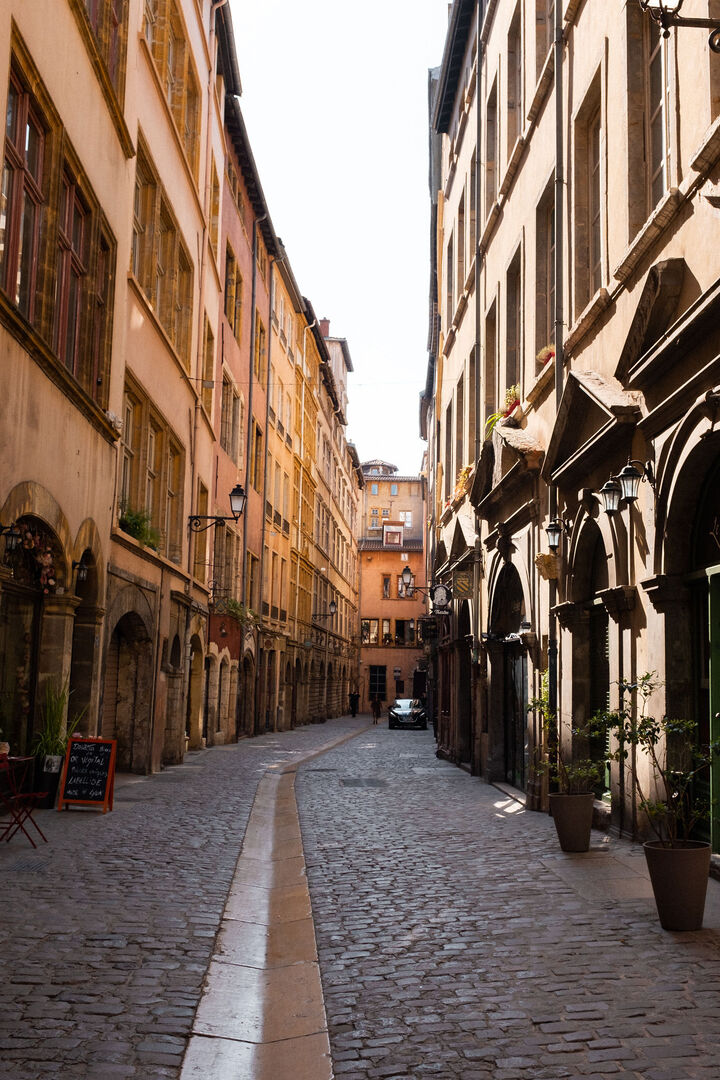
The museums
Time travel: Lyon’s History Museum takes you on a journey through the centuries, from Antiquity to the present day, with interactive exhibits, historical objects and evocative reconstructions.
Exploring key periods: Discover the highlights of Lyon’s history, such as its Roman past, its role during the Renaissance and its urban transformations in the 19th century, through artifacts, documents and works of art.
Living testimony: The museum offers a living insight into the daily lives of Lyonnais through the ages, highlighting their traditions, trades and lifestyles.
The magic of puppets: The Musée des Arts de la Marionnette celebrates the age-old art of puppetry through an impressive collection of puppets from around the world, from historic pieces to contemporary creations.
Playful exploration: Immerse yourself in the fantastic world of puppetry through interactive exhibitions, shows and workshops where young and old can immerse themselves in the art of puppet theater.
Tribute to cultural heritage: The museum pays tribute to the richness and diversity of puppetry traditions around the world, highlighting their cultural and artistic importance.
The Musées Gadagne, located in the historic district of Vieux Lyon, are cultural gems that offer a fascinating dive into the city’s history and arts. Comprising the Musée d’Histoire de Lyon and the Musée des Arts de la Marionnette, these two captivating institutions celebrate Lyon’s rich and diverse heritage.
Getting to Lyon Saint-Jean
To get to Lyon Saint-Jean, you have several options depending on your point of departure and transport preferences. Here’s a handy guide to help you find your way:
To get to Lyon Saint-Jean, you have several options depending on your point of departure and transport preferences. Here’s a handy guide to help you find your way:
- Rue Saint-Jean The district’s main thoroughfare, lined with stores, restaurants and historic sites. It leads directly to the majestic Cathédrale Saint-Jean.
- Rue du Bœuf Parallel to Rue Saint-Jean, this picturesque street is full of charm, with its colorful facades and small craft stores.
- Rue des Trois Maries A cobbled street renowned for its art galleries and artists’ studios, offering a bohemian, creative atmosphere.
- Metro Line D The nearby Vieux Lyon station is a convenient point of access to the Saint-Jean district.
- Streetcar T1 The Saint-Paul and Saint-Jean stations are also just a short walk from the district, making it easy to get around from other parts of the city.

The route Where are we going?
The Lyon Saint-Jean district is bounded by the river Saône to the west, the Saint-Paul district to the north, the Saint-Georges district to the east and the Saint-Just district to the south.
By following these directions, you should be able to easily get to Lyon Saint-Jean and explore all that this historic district has to offer!



